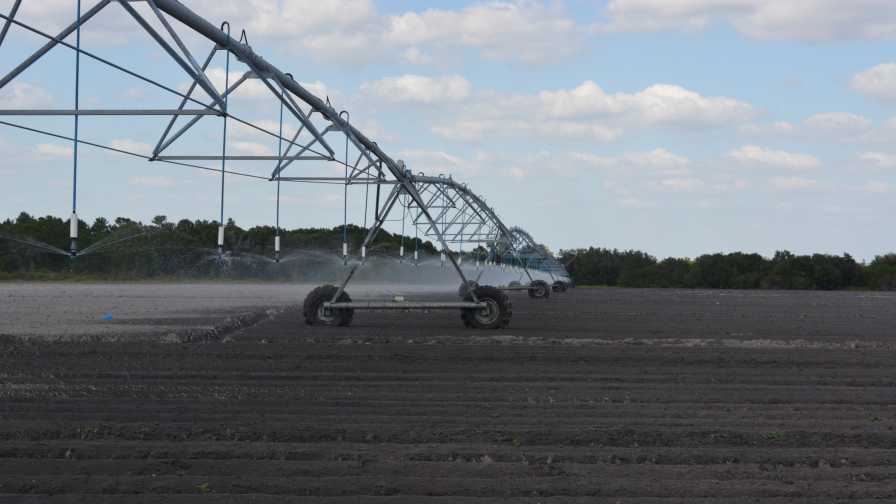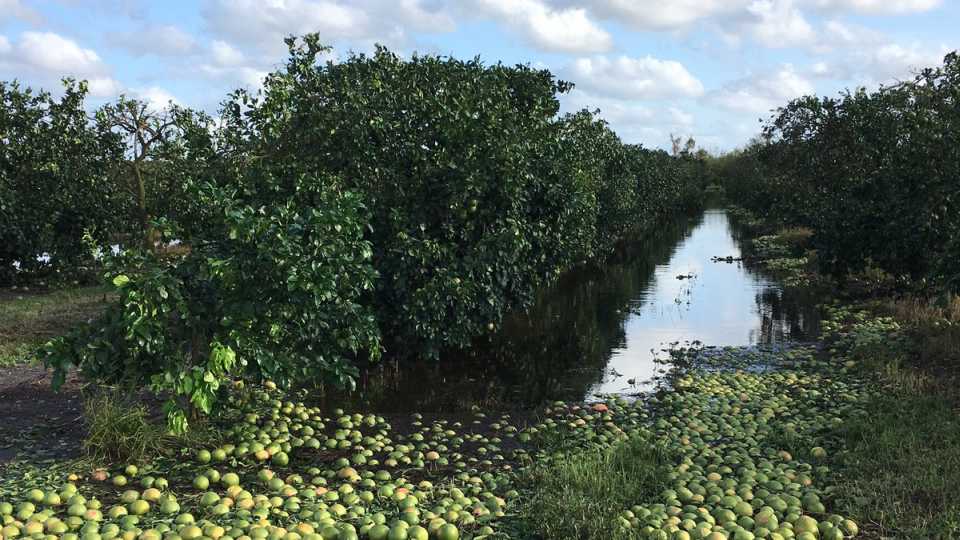Food Safety Modernization Act to Mark a Milestone in 2018

One of the most complex regulations in the Produce Safety Rule is requirements for testing of agricultural water. So far, FDA has worked with the industry to modify unworkable parts of the rule. Photo by Frank Giles
January 2018 marks a big milestone for the Food Safety Modernization Act (FSMA) and large farms ($500,000 or more revenue) when the Produce Safety Rule comes into force on Jan. 28. For smaller farms, the rule will kick in subsequent years. The good news for large growers is this first year will focus less on regulation and compliance and more on education and readiness.
According to Martha Roberts, a Food Safety Consultant with Roberts Associates, growers should take advantage of this opportunity to be sure they are ready for FSMA regulations.
“The states through the National Association of State Departments of Agriculture working with FDA have agreed this first year there will be more limited inspections,” she says “They will approach 2018 more as a time to educate.”
On-Farm Readiness Review
Roberts says On-Farm Readiness Reviews are a new and great opportunity for growers to test how prepared they are for FSMA.
“Farmers can voluntarily allow a team comprised of regulators (state and/or federal) and Extension to work with them to see if they are fully ready to implement the rule,” she says. “This is totally non-regulatory.”
Roberts adds there will be no records taken of these on-farm reviews, so she strongly recommends growers take advantage of a dry run of what requirements would be in a real inspection in the future.
“There are always exceptions, and this is a reasonable one,” Roberts says. “If anybody went on the farm and finds an egregious condition, which might be something like raw sewage leaking out of a portable toilet or gross contamination in a field, that would have to be taken care of immediately. And, if a farmer is willing to do that, it would not require further action. But, if there was unwillingness to do anything, regulatory action would require correction because it represents an immediate threat to human health.”
What’s up With Water?
The biggest area of concern has been the Produce Safety Rule’s regulation of agricultural water and testing. The latest news is that FDA has proposed an additional two to four years extension of compliance dates (for produce other than sprouts), in addition to the original two years. This means if a proposed rule is passed, the first compliance dates for water requirements would be in 2022.
The other good news is the FDA has provided some flexibility to the rule. Originally, only one test was allowed to sample for contamination in the water. The test was very restrictive and expensive.
In response to this, the Center for Produce Safety convened a group of scientist to look at available tests to recommend other methods of testing that was more reasonable for growers to utilize.
“FDA took the review of scientists and allowed these other methods of testing,” Roberts says. “So, instead of one undoable method, there are now eight methods available.”
Also, continuing discussions with FDA are underway in how many places growers would need to test on a farm when it comes to agricultural water sources. Roberts says the current guidance is suggesting far too many background samples be pulled from ground and surface water.
“There is still a lot of work to be done in sorting out the water testing requirements, so growers should stay tuned as guidance develops,” she says. “Your state agriculture department and produce and food safety associations are great places to stay informed.”
While water testing guidance develops, Roberts suggests growers conduct some testing of the ag water they use in production to establish an idea where they stand in relation to food safety and to prepare for FSMA in the future.

After Irma, this was a common sight in citrus groves across Florida.
Photo by Monica Ozores-Hampton
Hurricanes and Food Safety
Coming off a season that brought Hurricane Irma, it is worth taking into account how flooding can impact the safety of produce. While flooding from afternoon downpours generally don’t pose a contamination risk, the type of flooding resulting from hurricanes where streams, rivers, and lakes overflow, can cause contamination.
Chemical and microbial are the most common types of contamination. Microbial pathogens may include bacteria, parasites, and viruses. Sources of these might come from upstream farms, rural septic systems, overflow from industrial sewage systems, and raw manure or feces.
Chemical contaminants may include heavy metals, petroleum products, pesticides, or other agricultural chemicals. Sources of chemical contamination will vary greatly depending on the severity of the flood, proximity to operations using chemicals, or run-off from roadways.
According to the Produce Safety Alliance, if flood waters have touched the edible fruit or vegetable, then by law, it is considered adulterated and can not enter the food chain.
Crops near flooded areas or those that were flooded without the edible part of the plant coming in contact with the flood water (such as sweet corn or staked tomatoes) need to be evaluated on a case-by-case basis. These crops, as well as those in which the edible portion develops after flood waters recede, are not automatically deemed adulterated. The following questions should be asked: Is the edible part of the plant developing, and if so, how far above the flood water was it? Is there any evidence that flood water splashed up onto edible portion of the crop?
If flood waters splashed onto the edible crop, it very well could have been exposed to pathogens and/or chemicals and should be considered not safe.










